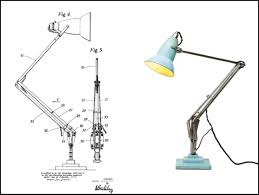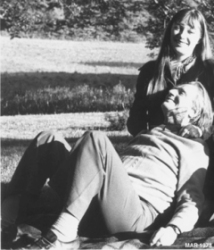
George Cawardine (1887-1948) is remembered for his historic contribution to modern design in the form of his iconic Anglepoise lamp, arguably one of the landmark designs of the last century. The Anglepoise is memorable not only for its unique and previously unknown form, but also for its unusual genesis and profound influence on subsequent lighting forms. Cawardine set out to find an application for a new invention, and in doing so created an entirely new design concept. He operated a small factory in Bath, England that developed vehicular suspension systems for automobiles. A dedicated tinkerer and inventor, Cawardine designed and patented a new spring that could move in any direction, but remained rigid in any position. Determined to incorporate his invention in a product, Cawardine designed a lamp based on the principles of human limbs, particularly the arm. Using several of his springs in the design to create a state of constant tension, his new lamp could be positioned to shine light in any direction, and would remain in the desired position until re-adjusted. The principal structural elements consisted of a hinged, lightweight 2-section arm mounted on a heavy swivel base, and headed by a conical focused-beam shade. Intended for industrial applications, the lamp's ability to direct and focus light at a desired spot proved equally useful as a desk or reading lamp. Cawardine contracted with the firm of H. Terry & Sons in nearby Redditch to produce his "Anglepoise" lamps, and the first truly modern light quickly became a staple of life in the U.K. Within a few years, Cawardine and Terry had produced several variations,including reducing the number of springs from 4 to 3, and altering the shape of the base and shade. In 1937, patent rights for the Anglepoise were sold to the Danish manufacturer Jacob Jacobsen, who produced and marketed the lamp under the name Luxo and made it an international success in the post-war period. Today there are countless iterations of the original Anglepoise all over the world, including the modest student model, an oversized floor version, and even an up-to-date English example.




.png)